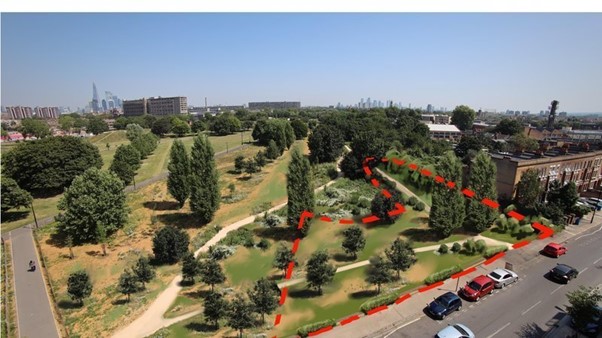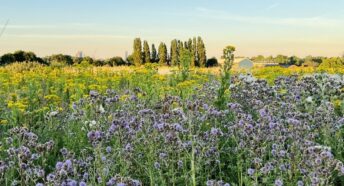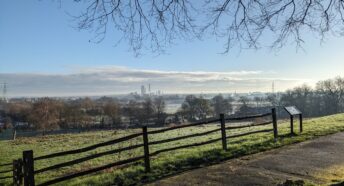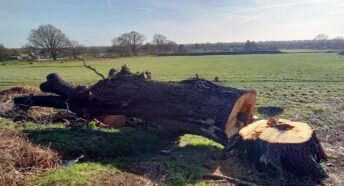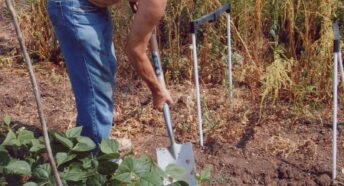Greenspace under threat in London March 2021
Core to CPRE London’s work is defending its precious green spaces. Three spaces are currently under threat and we have urged Londoners to write to register their own concerns about these proposed developments.
- The Park Road allotments at the edge of Syon Park.
- A piece of protected Metropolitan Open Land which was meant to be incorporated in Burgess Park but which is now threatened with development of tall flats which will mean the plans to incorporate the land in the park won’t go ahead and a large block of flats will impact on the amenity of the park.
- Edgebury Grazing Land at Slades Drive in Chislehurst is the proposed site of the develpment of a new school despite it being designated Local Open Space, having extremely poor access for vehicles and being prone to frequent flooding.
The Park Road allotments at the edge of Syon Park.
We have written to London Borough of Hounslow, Planning Committee, by email to planning@hounslow.gov.uk, as follows:
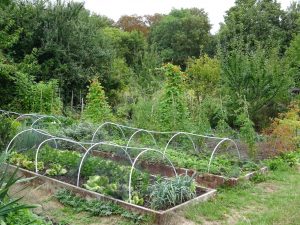
Dear Sirs,
Planning application P/2020/4292 – Park Road Allotments, Park Road, Isleworth
CPRE London is a membership based charity with 2500 members across London, concerned with the preservation and enhancement of London’s vital green spaces, as well as the improvement of London’s environment for the health and wellbeing of all Londoners.
We strongly object to this proposed development for the following reasons:
1. Loss of Local Open Space and green infrastructure. The site is designated Open Space and an important part of local green infrastructure. The proposed development would lead directly to its loss. Two thirds of the existing open space will become a housing estate.
2. Loss of community space / allotments. 31 usable smaller allotment plots are proposed against existing 37 larger conventional sized plots at a time when allotment waiting lists are lengthening and demand for plots growing. Contrary to London Plan aim “to protect existing allotments”, the proposal reduces substantially the scope of existing allotment lettings, does not meet current plot holder requirements or enable future or additional lettings.
3. Loss of assets contributing to quality of life, leisure use, heritage value, biodiversity, food growing, health benefits and physical activities. The allotments have been in use for over 100 years and the site has been open space for centuries in an area historically renowned for its high-quality market garden produce. The allotments currently further social wellbeing and the health of the local community, support culture and leisure activities and promote biodiversity. The development is within Isleworth Riverside Conservation Area but the proposal fails to respect the grain, scale and proportions of the surrounding area.
4. Loss of habitat and environmental assets 1.3 hectares of grassland, scattered shrubs and arable (allotments) will be lost. Habitats will also be lost as a result of construction activities assessed at the site as being significant at a local level. A total of 22 individual trees and 10 group trees will be removed.
5. Housing need has not been demonstrated: the recent Housing Development Test indicates Hounslow has delivered beyond expectations, 75% being the maximum pass, with Hounslow achieving 154%.
6. ‘Enabling’ alternatives are available.
• As an ‘enabling’ development the proposal to sacrifice one important asset (allotments) to support repair and maintenance of another (Syon House) is not supported. There are other options for creating a sustainable financial model for Syon House, not least developing it as an attractive visitor destination with expanses of green space in a heavily built-up area.
• While we regard the maintenance and repair of Syon House as extremely important, we do not support the loss of one important asset to fund another.
• In any event it is not clear that the development will enable maintenance and repair of Syon House.
7. Not designated for housing in the Local Plan – The site is not designated for housing development.
The loss of this important asset is in no way justified. The Local Open Space in question forms an important part of a unique character area, is representative of its historic culture of food growing and market gardens and is irreplaceable.
Find out more at The Isleworth Society.
A piece of protected Metropolitan Open Land which was meant to be incorporated in Burgess Park
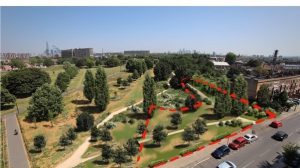
We have written to London Borough of Southwark, Planning Committee, by email to planning.applications@southwark.gov.uk, as follows:
Dear Sirs,
21/AP/0451 1-13 Southampton Way London Southwark SE5 7SW
CPRE London is a membership-based charity with 2500 members across London, concerned with the preservation and enhancement of London’s vital green spaces, as well as the improvement of London’s environment for the health and wellbeing of all Londoners.
We strongly object to this proposed development for the following reasons:
1. This site is part of Burgess Park and Metropolitan Open Land so this development would entail the loss of this corner of the park forever.
2. The current Burgess Park Masterplan shows this plot as becoming part of the park. This plan should be implemented (reflecting historic promises) and the proposed development would clearly stop that from happening. The open space protection allocated to this land has been in place since the early 1980s, as it was part of the designated land-bank for incorporation into Burgess Park by the GLC and the then Southwark Council under the Mid-South Southwark Local Plan. The designation was subsequently confirmed in the Southwark Unitary Development Plan and the previous and current Southwark Plans. Existing permissions for the site were temporary annual permissions awaiting the compulsory purchasing of the land and integration into the park as laid out into 2015 Burgess Park Masterplan. In 2016 the Council passed a motion committing to the compulsory purchase of the remaining MOL designated for the Park.
3. The proposed development is inappropriate on Metropolitan Open Land. The proposal is in breach of the Southwark and London Plans which rule out inappropriate development on MOL.
4. The proposed development would introduce a tower block on the park entrance which would greatly damage the amenity of the park and the significant investment made in its development by the Council and local community.
We urge the Council to accelerate the completion of its original Masterplan to support the health and well-being of the community and contribute to the Council’s climate change mitigation strategy and would welcome a roadmap for the completion of the Burgess Park Masterplan.
Find out more and sign the petition.
Edgebury Grazing Land at Slades Drive in Chislehurst
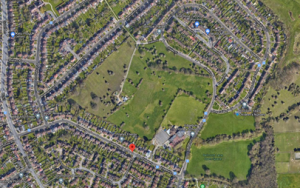
We have written to London Borough of Bromley, Planning Committee, by email to planning@bromley.gov.uk as follows:
Dear Sirs,
21/00570/FULL1 – Edgebury Grazing Land, Slades Drive, Chislehurst
CPRE London is a membership-based charity with 2500 members across London, concerned with the preservation and enhancement of London’s vital green spaces, as well as the improvement of London’s environment for the health and wellbeing of all Londoners.
We strongly object to this proposed development for the following reasons:
1. Loss of Local Open Space and green infrastructure. The site is designated Open Space and an important part of local green infrastructure. The proposed development would lead directly to the loss of a large section of the space. The impact on habitat for wildlife, in particular bats which hare known to be in the area, has been omitted from impact assessments.
2. Alternative sites. There are alternative, more appropriate sites which could be considered for this facility in Bromley including redevelopment of other education facilities. Until all alternatives have been properly considered, the use of green space should not be considered.
3. Poor vehicle access to the site will necessitate excessive additional vehicle movements. This is a major concern as this type of facility necessarily generates a lot of vehicle movements and the access is so poor vehicles will need to drive in a full circle past many houses to reach the school. A much more accessible, alternative site should be found.
4. Covenant for education use does not stretch to building on land. The land is covenanted for educational use but this term is intended to mean for use as a field, not for development of educational facilities.
5. Potential risk of flooding is very high. At times the storm drains in the cul-de-sac near the proposed entrance are overwhelmed with the volume of water running off the field and, with as little as five millimetres of rain, back gardens adjacent to the field are regularly flooded. There is a high risk of flooding both to the school and surrounding properties.
There is no further information online apart from the planning application.
